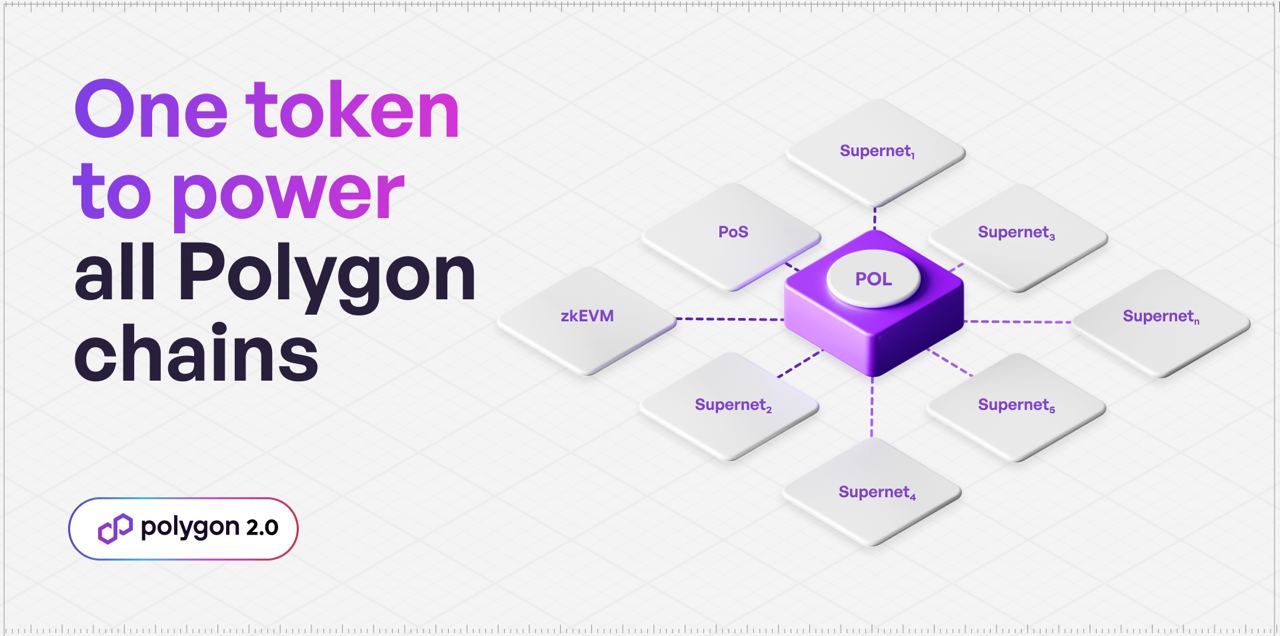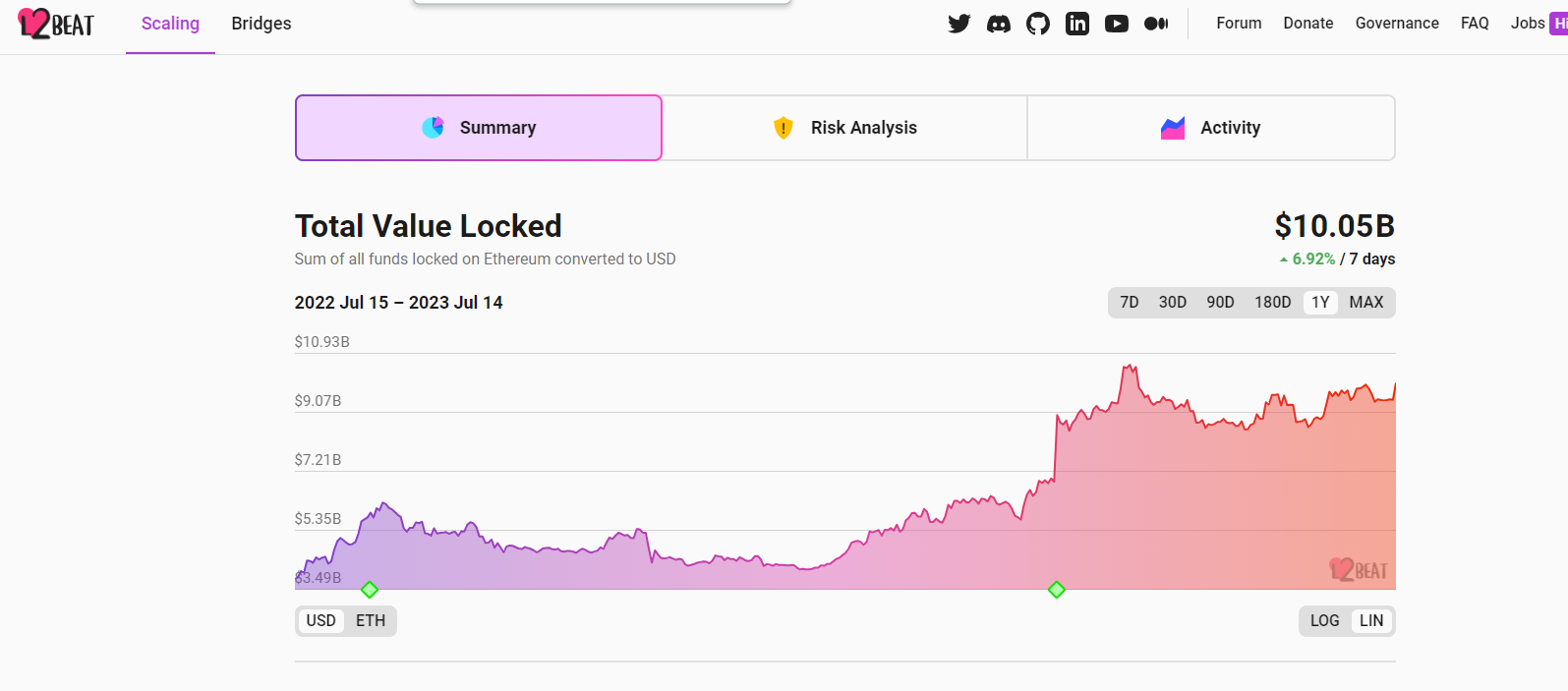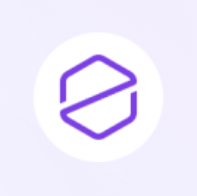MATIC upgraded to POL, frequent changes in senior personnel, can Polygon 2.0 continue the myth?
Author: Grapefruit, ChainCatcher
On July 13, Polygon officially released the white paper for the economic model of its native new token POL for Polygon 2.0. POL is not a new token; it is an upgrade from the original MATIC token. The new POL token will operate across all Polygon ecosystem networks, including Polygon PoS, Polygon zkEVM, and Polygon Supernets. At that time, MATIC token holders will exchange their tokens for POL at a 1:1 ratio.
The price of MATIC surged, with a 24-hour increase of 18%, currently priced at $0.86.
However, the white paper states that the initial total supply of POL is 10 billion tokens, with an annual inflation rate of 2% over the next 10 years. This means that the total supply of POL tokens will exceed the original total supply of 10 billion MATIC tokens. This has caused dissatisfaction among MATIC holders, who believe this move dilutes the original value of MATIC.
According to data from CoinGecko, the current circulating supply of MATIC is 9.319 billion tokens, with a current market cap of $8 billion, ranking 11th among crypto assets.
What exactly is the difference between POL tokens and the original MATIC? What role does POL play in Polygon 2.0? What upgrades does Polygon 2.0 have?
MATIC Upgrade to POL Token Inflation "Causes" Controversy
The POL token is an important part of the Polygon 2.0 roadmap and is of great concern to community users because once the MATIC to POL upgrade plan is officially implemented, it will mean a change in the narrative logic of the MATIC token (such as utility and value). However, the hidden issuance volume of POL in the white paper has sparked controversy.

First, in the blog titled "Polygon 2.0: Tokenomics" released by Polygon, there is no mention of the total supply details of POL tokens, only a brief introduction to the uses of POL and the upgrade migration process.
However, in the white paper, the supply model of POL consists of two parts: initial supply and continued inflation, with the initial issuance total of 10 billion tokens, all used for the MATIC token upgrade exchange. Additionally, POL will be inflated at a constant rate of 2% annually, with this inflation rate remaining unchanged for at least 10 years. As for adjustments to the inflation rate after 10 years, the official statement indicates it will not exceed 2% and may even be paused.
The inflation portion has two main uses: validator rewards and ecosystem fund development. The former allocates 1% of the annual inflation supply of POL as basic protocol rewards to validators to incentivize their participation. The latter also allocates 1% of the annual inflation to the ecosystem fund to continuously support the further development and growth of the Polygon ecosystem. During the initial 10 years, the inflation rate cannot be changed; after 10 years, the community can decide to reduce this inflation rate in any way through a governance framework, but it will not exceed 1%.

This means that over the next 10 years, 200 million POL will be inflated annually, and combined with the initial supply of 10 billion tokens, the total supply of POL will exceed the maximum limit of MATIC.
This has left MATIC holders quite dissatisfied, believing that the inflation of POL will dilute the original value of MATIC. They question why not directly enhance the value of MATIC tokens instead of taking this extra step.
Some users have expressed that it seems Polygon is out of money and wants to issue the new POL token to fund itself. Currently, 93% of MATIC is already circulating in the secondary market, and the Polygon team does not have enough tokens to incentivize user growth and application adoption for Polygon zkEVM, so they can only issue a new coin.
The official explanation is that the issuance volume and inflation rate of POL are set because the Polygon ecosystem and Web3 need time to mature and achieve mainstream adoption. Based on historical adoption cycles of the internet and computing platforms, the maturity phase may take about 10-15 years. During this period, the ecosystem requires continuous economic support.
Once the Polygon ecosystem and Web3 reach maturity, when the transaction fees and other incentives obtained from validating various chains in the Polygon ecosystem provide sufficient returns, the community can decide to reduce or completely stop the inflation used for validator rewards. Similarly, once the ecosystem no longer requires additional economic support, the community can also decide to reduce or stop the inflation for the community treasury.
Clearly, the adoption cycle of Web3 may differ slightly or completely from the history of the internet. If it turns out that achieving mainstream adoption takes longer and the ecosystem still requires support after 10 years, the community can choose not to act preemptively or adjust the inflation rate as needed.
This seems to align with users' speculation that "the Polygon team does not have enough tokens to incentivize user growth and application adoption for Polygon zkEVM, so they can only issue a new coin."
POL Token Will Span the Entire Polygon 2.0 Ecosystem
Since the announcement of the Polygon 2.0 plan, Polygon's strategy has transformed from a single blockchain network to a multi-chain ecosystem driven by ZK Rollup, which includes Polygon PoS, Polygon zkEVM, and various sub-networks built on Polygon Supernets, with the POL token operating across its entire network ecosystem.

In the white paper, the official states that POL is the third-generation token following BTC and ETH. Polygon explains this as follows:
BTC, while the first-generation native token, is mainly used to pay on-chain GAS fees and miner rewards, but for holders, it cannot serve as a productive asset (such as staking as a validator) and lacks any governance power.
ETH is a productive asset; Ethereum's PoS mechanism allows ETH holders to stake their tokens, participate in securing the network, and receive incentives. However, its supply is unpredictable, and the initial supply tokens allocated to the governance foundation will be exhausted, leading to a halt in support for the ecosystem.
Similarly, ATOM, as the native token of the Cosmos Hub, is also a productive asset that can be staked to help secure the Cosmos Hub and earn rewards. However, this token is only useful within the Cosmos Hub; it does not operate and protect other chains in the Cosmos multi-chain ecosystem, and the economic support it promotes cannot be sustained indefinitely, nor can the community treasury funds be exhausted.
Polygon aims to solve these issues by providing 1% of the total annual inflation supply to the community treasury, which can be continuously used to support its ecosystem development.
Additionally, Polygon describes POL as a "hyperproductive token," where POL token holders can stake as validators to validate all of the Polygon 2.0 ecosystem networks. On different chains, the roles of POL holders also vary; for example, on the zkEVM chain, POL holders can act as provers to generate and submit zero-knowledge proofs; on the PoS chain, POL holders can act as validators responsible for submitting transactions and generating blocks.
The concept of the Staking Layer introduced in Polygon 2.0 is where validators stake POL tokens. Here, users can stake POL tokens into the validator pool, participate in validating the Polygon chain, and earn validator rewards from the annual 1% inflation of POL.

This is similar to Web2 cloud platforms, where users do not need to worry about which cloud their app's data is stored on. As validators, they also do not need to focus on which chain to validate to maximize reward earnings.
Thus, POL will be the foundational asset within the Polygon ecosystem, similar to the relationship between AVAX and Avalanche and its subnets, where users can stake AVAX to become validators, validating both the Avalanche mainnet and its ecosystem subnets. However, in Polygon, validators can validate multiple chains, and each chain can provide various roles and corresponding rewards, allowing them to validate transactions across networks and generate zero-knowledge proofs to submit to the Ethereum mainnet, among other functions.
Regarding which token will be used to pay GAS fees on the Polygon ecosystem chain, the official states that the Polygon PoS chain will use POL as the method for GAS fee payment, while other chains can choose either POL or issue their own native tokens.
Can Polygon 2.0 Create Glory Again?
The vision of Polygon 2.0 is to become the value layer of the network, simply understood as the platform layer of Web3 (like Cosmos and Polkadot), allowing developers to build their own blockchain networks based on it, providing a more flexible and powerful platform for DApps. Its functionality is similar to Web2 cloud service platforms.
Currently, Polygon 2.0 is a multi-chain network driven by ZK technology and has introduced a set of modules, including consensus and synchronization mechanisms, fraud proofs, etc. Developers can use these modules to build their own blockchain networks, which have unlimited scalability and unified liquidity, and can interact across chains. For users, using the entire network feels like using a single chain.
Among these, Polygon PoS will upgrade to zkEVM Validium to make it compatible with ZK technology, at which point zkEVM, PoS, and Supernets sub-networks will achieve information and value interoperability.
Overall, Polygon 2.0 will be a collection of ZK-based L2 scaling networks.
Why is Polygon transforming into a ZK-based system? This is mainly because L2 has become the primary narrative logic in the crypto market. As of July 14, the value of crypto assets locked in L2 networks has exceeded $10 billion.

Polygon 2.0, which likes to chase trends, also hopes to replicate the legendary narrative of EVM compatibility, creating a new legendary narrative of "zkRollup L2 multi-chain interoperability protocol." Of course, the current results are not achieved overnight; this is the result of years of accumulation by Polygon. Polygon has positioned itself as the "integrator of L2 scaling solutions" for many years and has invested $1 billion to acquire and invest in research related to ZK technology.
However, the competition in the L2 space is fierce. Although Polygon is relatively well-known in terms of branding and incubating projects, its on-chain ecosystem share in the L2 market is still lagging behind.
According to L2Beat data, in the L2 track, Arbitrum has a TVL of $6.07 billion, the Op Mainnet has locked assets worth $2.3 billion, zkSync Era has a TVL of $600 million, while Polygon zkEVM's TVL is only $56.64 million.

In addition to external competition, Polygon has also faced internal turmoil, with MATIC being defined as a security by the SEC and frequent changes in leadership.
Some users even suspect that POL is a strategy to cope with SEC regulation, and they are also concerned that the Polygon team issuing another new coin is a blatant challenge, which could likely provoke further regulatory actions from the SEC.
Since Polygon Labs announced a 20% layoff in February of this year, news of high-level personnel changes has frequently surfaced. In March, co-founder Anurag Arjun resigned and acquired Polygon's modular blockchain project Avail; Polygon's research head Prabal Banerjee joined the modular blockchain project Avail; just a few days ago, on July 7, former CEO Ryan Wyatt announced his resignation at the end of July to take on an advisory role, with Chief Legal Officer Marc Boiron promoted to CEO.
Although these news items have not caused a significant stir in the crypto market, frequent changes in high-level personnel can affect the company's strategy and development direction. In the L2 market surrounding the Ethereum traffic battle, whether Polygon 2.0 can once again become a hot project as desired still requires rapid efforts from the ecosystem.
















